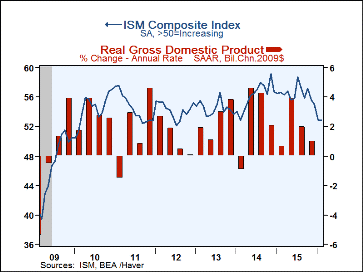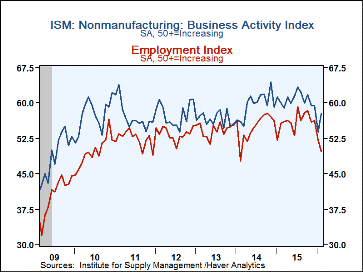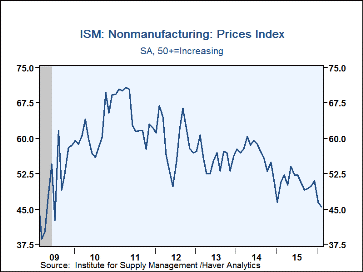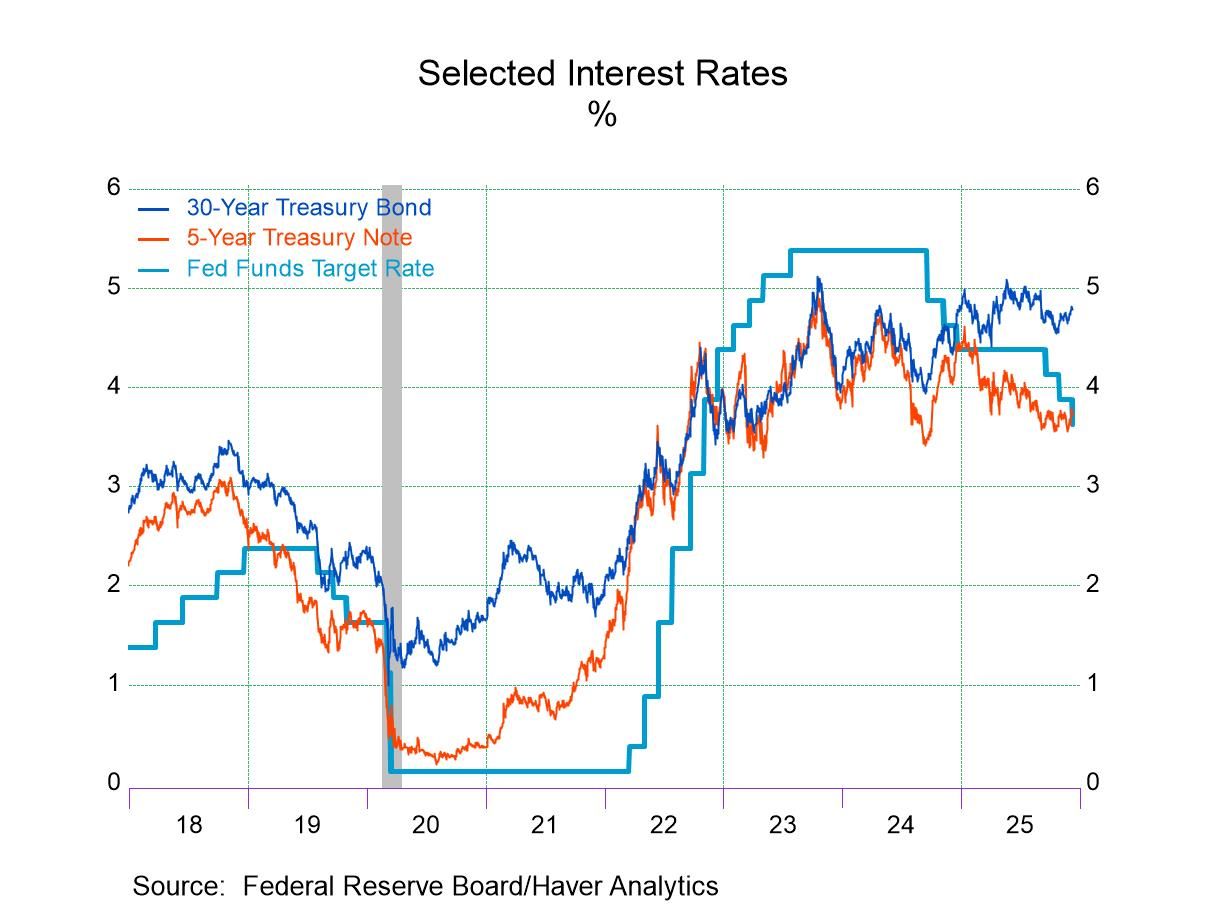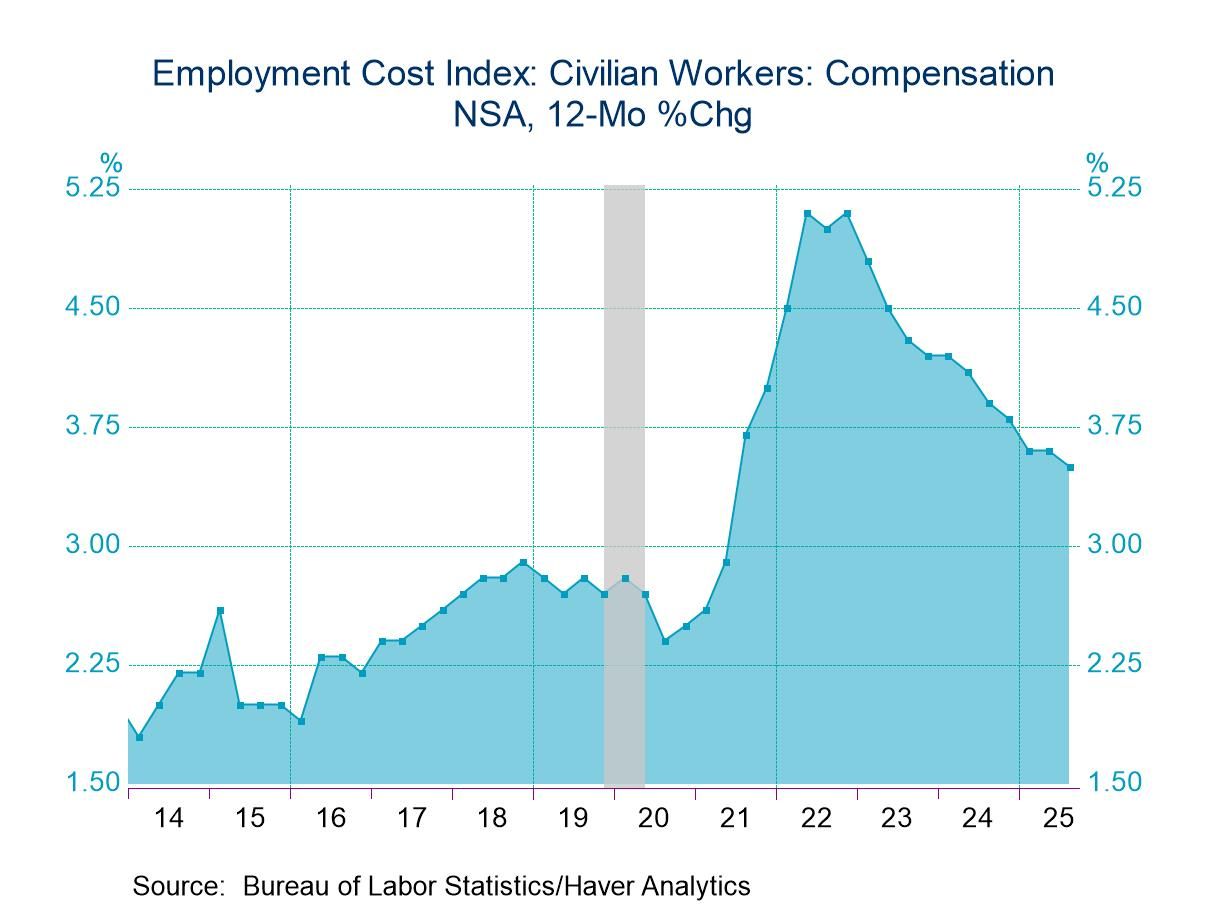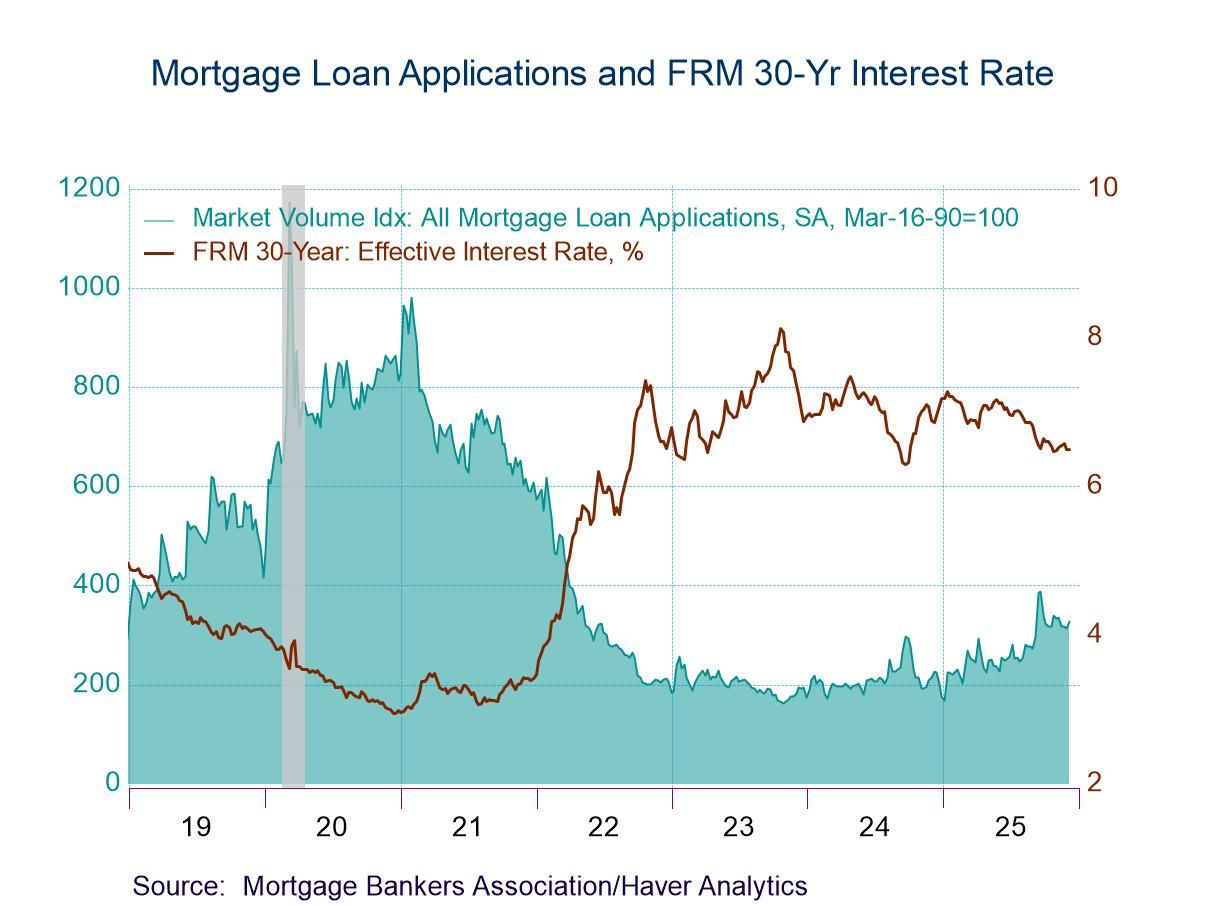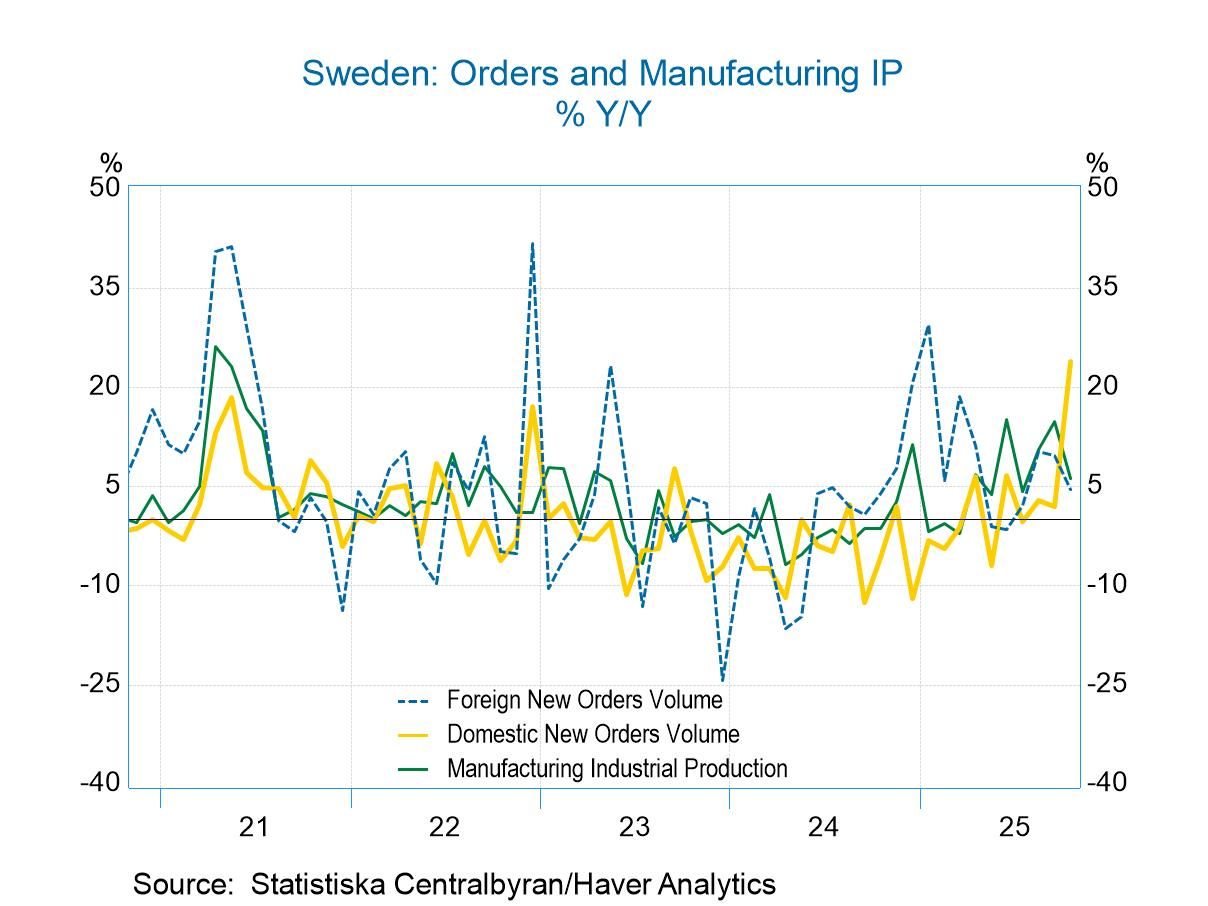 Global| Mar 03 2016
Global| Mar 03 2016U.S. ISM Nonmanufacturing Index Is Steady At Two-Year Low
by:Tom Moeller
|in:Economy in Brief
Summary
The Composite Index of Nonmanufacturing Sector Business from the Institute for Supply Management (ISM) was little-changed at 53.4 during February versus an unrevised 53.5 in January. It was the lowest reading since February 2014. [...]
The Composite Index of Nonmanufacturing Sector Business from the Institute for Supply Management (ISM) was little-changed at 53.4 during February versus an unrevised 53.5 in January. It was the lowest reading since February 2014. Consensus expectations had been for 53.1 in the Action Economics Forecast Survey. The ISM data are diffusion indexes where a reading above 50 indicates expansion.
Haver Analytics constructs a Composite Index using the nonmanufacturing ISM index and the ISM factory sector measure released Tuesday. It held steady m/m at 52.9, also the lowest level since February 2014. During the last ten years, there has been a 72% correlation between the index and the q/q change in real GDP.
Amongst the component series, the employment index declined sharply to 49.7, indicating a decline in jobs for the first time since February 2014. During the last ten years, there has been a 96% correlation between the employment index and the m/m change in service plus construction payrolls. The new orders index also fell to 55.5, its lowest point since March 2014. The supplier delivery index declined to 50.5, indicating a modest pick-up in delivery speeds. The rise in the business activity reading to 57.8 reversed much of the prior month's decline, but left it well below the July 2015 high of 63.4.
The prices paid series remained below break-even for a second month as it fell to 45.5 from 46.4. Ten percent (NSA) of respondents paid higher prices while 17 percent paid less.
The export order series (NSA) reversed the prior month's decline and jumped to 53.5. The imports series surged m/m to 55.5, the highest level since March 2015. The order backlog figure remained at 52.0, down from a high of 56.5 six months ago.
The figures are available in Haver's USECON database. The expectations figure from Action Economics is in the AS1REPNA database.
The Fed's latest Beige Book covering regional economic conditions can be found here.| ISM Nonmanufacturing Survey (SA) | Feb | Jan | Dec | Feb'15 | 2015 | 2014 | 2013 |
|---|---|---|---|---|---|---|---|
| Composite Diffusion Index | 53.4 | 53.5 | 55.8 | 57.1 | 57.1 | 56.2 | 54.6 |
| Business Activity | 57.8 | 53.9 | 59.5 | 60.1 | 60.8 | 59.7 | 56.6 |
| New Orders | 55.5 | 56.5 | 58.9 | 57.6 | 59.2 | 58.6 | 55.8 |
| Employment | 49.7 | 52.1 | 56.3 | 55.6 | 56.1 | 54.9 | 54.3 |
| Supplier Deliveries (NSA) | 50.5 | 51.5 | 48.5 | 55.0 | 52.5 | 51.8 | 51.7 |
| Prices Index | 45.5 | 46.4 | 51.0 | 50.7 | 50.7 | 56.8 | 55.7 |
Tom Moeller
AuthorMore in Author Profile »Prior to joining Haver Analytics in 2000, Mr. Moeller worked as the Economist at Chancellor Capital Management from 1985 to 1999. There, he developed comprehensive economic forecasts and interpreted economic data for equity and fixed income portfolio managers. Also at Chancellor, Mr. Moeller worked as an equity analyst and was responsible for researching and rating companies in the economically sensitive automobile and housing industries for investment in Chancellor’s equity portfolio. Prior to joining Chancellor, Mr. Moeller was an Economist at Citibank from 1979 to 1984. He also analyzed pricing behavior in the metals industry for the Council on Wage and Price Stability in Washington, D.C. In 1999, Mr. Moeller received the award for most accurate forecast from the Forecasters' Club of New York. From 1990 to 1992 he was President of the New York Association for Business Economists. Mr. Moeller earned an M.B.A. in Finance from Fordham University, where he graduated in 1987. He holds a Bachelor of Arts in Economics from George Washington University.



